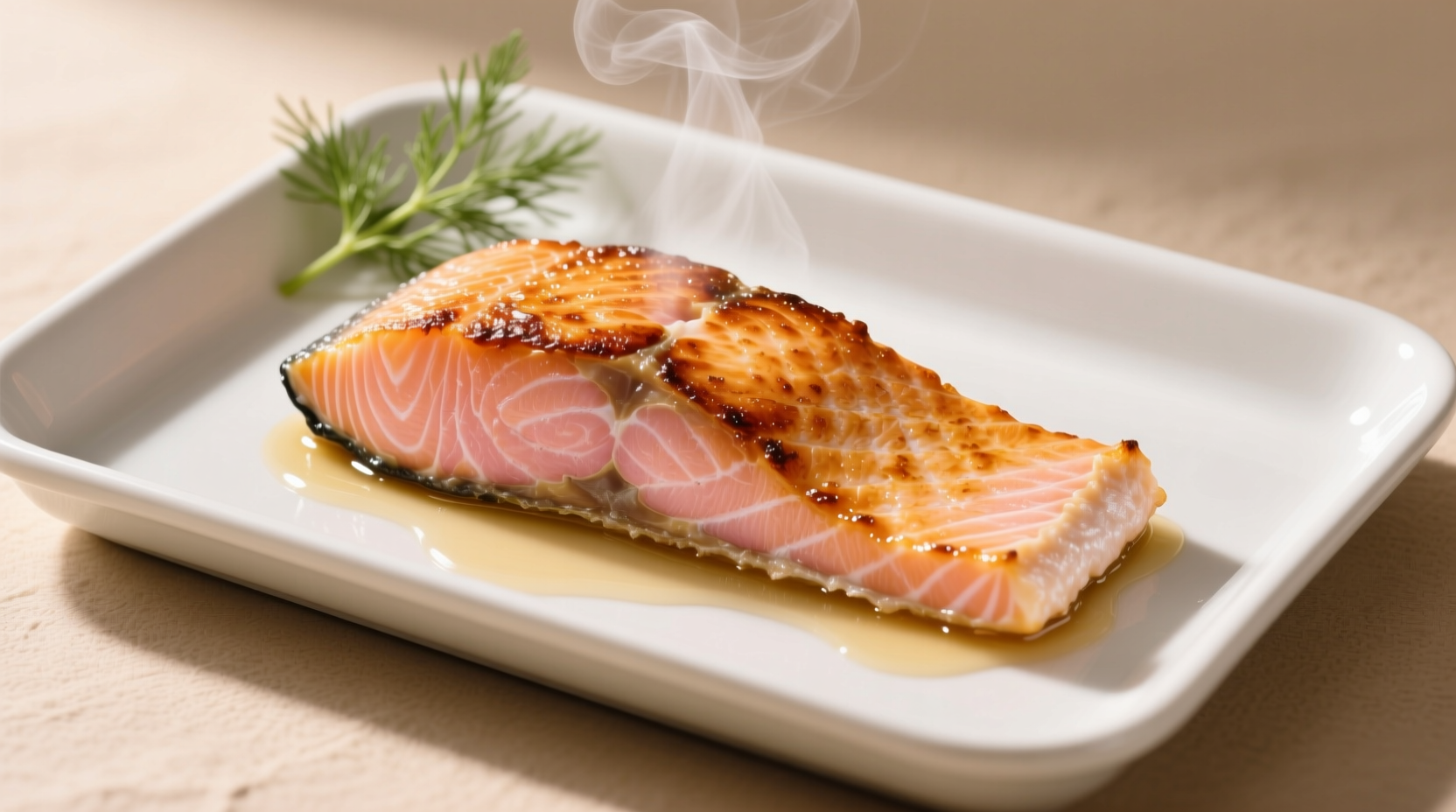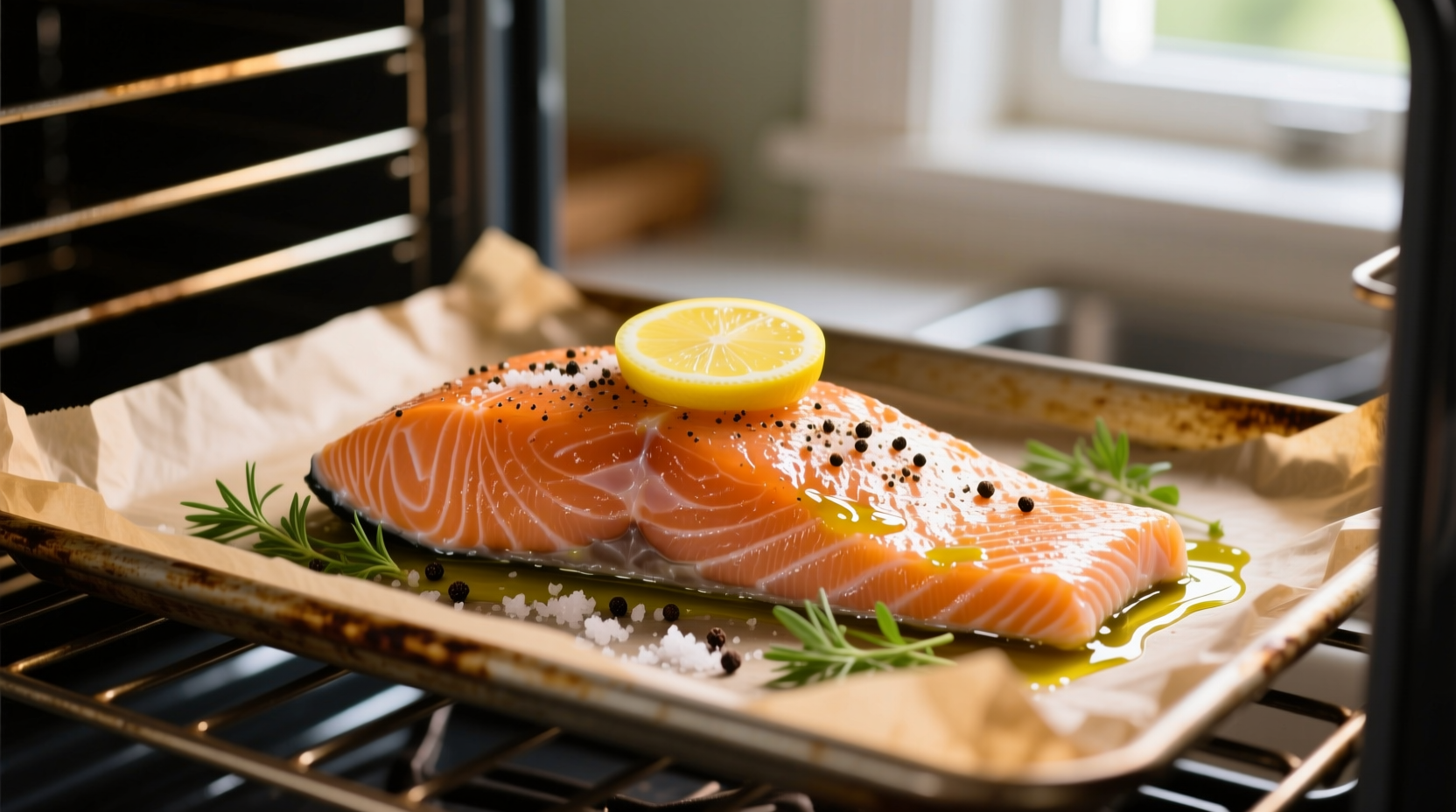Discover exactly how to bake salmon with professional precision—no guesswork, no dry fish, just restaurant-quality results in your home kitchen. This comprehensive guide delivers the exact temperature science, timing calculations, and visual indicators you need for flawless oven-baked salmon.
Why Temperature Matters for Perfect Oven-Baked Salmon
Getting the oven temperature right for salmon isn't just about cooking—it's food science. Salmon's delicate fat structure begins to break down at temperatures above 140°F (60°C), while proteins coagulate between 120-140°F (49-60°C). Cooking at 375-400°F creates the optimal environment for even heat penetration without causing the fish to seize up and expel moisture.
According to the USDA Food Safety and Inspection Service, fish should reach a minimum internal temperature of 145°F (63°C) or until the flesh is opaque and flakes easily with a fork. However, professional chefs often remove salmon at 125-130°F (52-54°C) because carryover cooking will bring it to the perfect 135-140°F (57-60°C) range—the sweet spot for moist, tender salmon.
| Oven Temperature | Cooking Time (1-inch fillet) | Internal Temp Result | Texture Outcome |
|---|---|---|---|
| 350°F (177°C) | 18-22 minutes | 145°F+ (63°C+) | Dry edges, potentially overcooked |
| 375°F (190°C) | 14-16 minutes | 135-140°F (57-60°C) | Perfectly moist with slight translucency |
| 400°F (205°C) | 12-14 minutes | 130-135°F (54-57°C) | Crisp exterior, silky interior |
| 425°F+ (218°C+) | 10-12 minutes | Variably over 140°F (60°C) | Risk of uneven cooking, dry spots |
The Step-by-Step Temperature Method
Follow this precise approach for consistently perfect results:
Preparation Phase
Remove salmon from refrigerator 15 minutes before cooking. Pat fillets completely dry with paper towels—moisture creates steam that prevents proper searing. Season with salt (¼ teaspoon per pound) and let sit for 10 minutes to allow salt to penetrate.
Cooking Execution
- Preheat oven to 400°F (205°C) with rack positioned in center
- Line baking sheet with parchment paper or lightly oiled foil
- Place salmon skin-side down (if skin-on) or presentation-side up
- Cook for 10-12 minutes for 1-inch thick fillets (8-10 minutes per inch of thickness)
- Check internal temperature 2 minutes before expected finish time
Doneness Verification
Don't rely solely on time—use these visual and tactile indicators:
- Color change: Translucent pink becomes opaque coral
- Flake test: Gently press with fork; should separate into large flakes
- Texture: Should feel slightly firm but yield to pressure
- Internal temp: 125-130°F (52-54°C) for medium-rare, 135°F (57°C) for medium

Adjusting for Real-World Variables
Several factors require temperature and timing adjustments:
Thickness Variations
Use the "8-10 minutes per inch" rule. Measure the thickest part of your fillet with a ruler. A 1.5-inch fillet needs approximately 12-15 minutes at 400°F. For uneven fillets, tuck under the thinner tail section to prevent overcooking.
Frozen vs. Fresh Salmon
Never cook frozen salmon directly—it leads to uneven cooking. Thaw overnight in the refrigerator, then proceed with standard timing. If absolutely necessary, add 5-7 minutes to cooking time when using partially thawed salmon, but expect slightly less optimal results.
Oven Type Considerations
Convection ovens circulate hot air, cooking food 25% faster. Reduce temperature by 25°F (14°C) or shorten cooking time by 20-25%. For example, cook at 375°F instead of 400°F, or reduce time from 12 to 9-10 minutes for standard fillets.
Avoid These Common Temperature Mistakes
Even with the right oven setting, these errors sabotage perfect salmon:
- Overcrowding the pan: Creates steam that lowers effective cooking temperature—leave 1 inch between fillets
- Opening the oven repeatedly: Each opening drops temperature by 25-50°F—use the oven light instead
- Not preheating properly: Cold oven = uneven cooking—allow 15-20 minutes for full preheat
- Ignoring carryover cooking: Salmon continues cooking 5-10°F after removal—pull early
When to Adjust the Standard Temperature
While 375-400°F works for most scenarios, these situations warrant temperature modifications:
- Skin-on salmon: Start at 425°F for 5 minutes to crisp skin, then reduce to 375°F
- Whole side of salmon: Lower to 350°F and cook 20-25 minutes for even heat penetration
- Marinated or sauced salmon: Reduce to 350°F to prevent sauce burning
- Delicate preparations (en papillote): 375°F maintains steam environment without tearing parchment
Food Safety and Quality Verification
While visual cues are helpful, a digital thermometer provides definitive accuracy. The Centers for Disease Control and Prevention confirms that fish is safe to eat at 145°F (63°C), but culinary professionals recognize that salmon reaches optimal texture at 130-135°F (54-57°C) before carryover cooking brings it to food-safe levels.
For those concerned about parasites in raw fish, the FDA recommends freezing salmon at -4°F (-20°C) for 7 days or -31°F (-35°C) for 15 hours before consumption. However, properly cooked salmon at recommended temperatures eliminates this concern entirely.
Perfecting Your Salmon Technique
Master these advanced temperature techniques for restaurant-quality results:
- The reverse sear method: Cook at 275°F until 120°F internal, then sear in hot pan for crispy skin
- Temperature mapping: Insert thermometer probe before cooking to monitor real-time temperature rise
- Resting protocol: Let salmon rest 3-5 minutes after cooking—temperature will rise 5-10°F during this time











 浙公网安备
33010002000092号
浙公网安备
33010002000092号 浙B2-20120091-4
浙B2-20120091-4